In my last article, “Patterns are Guidelines, Not Gospel,” I said that your chance of matching the gauge of a pattern was less than 50%. Now that I’ve been wrestling with this hare-brained notion that debunks common practice and flies in the face everything you’ve ever learned idea for five weeks, I’ve deduced that it’s worse than that. It’s not as bad as the proverbial snowball’s chance in H-E-Double Hockey Sticks, but it’s bad. It’s ugly. It’s OK. You can work with it. And in the end you will be relieved to know that you have not been doing anything wrong, you are right to be frustrated, and there are remedies. But you will need to look at some numbers.
I did some research. This is not because I’m virtuous, but because it’s my idea of goofing around, especially when something is niggling me. In this case, I looked at 20 sweater patterns, some paid, some free, some for babies, some for big guys, some by amateurs, some by famous designers. All the patterns called for worsted weight yarn (between DK and Aran). They all were done in stockinette stitch and the pattern gauges were measured over stockinette. Here are the gauges “required” by the patterns.
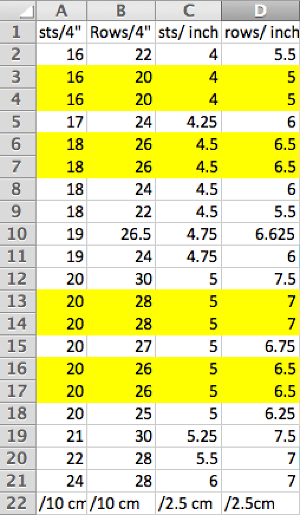
I highlighted, with yellow, the gauges that were duplicates. Count them. There are 16 different stitch and row combinations. But here’s the part that can tie a knot in your nose . . .
THESE 20 RECOMMENDED GAUGES DESCRIBE 13 DIFFERENT SHAPES OF STOCKINETTE STITCHES.
“Huh??!!?! “Pardon me?” . . . Let me explain with a story.
Thirty years ago I had a student who was crazy about M & Ms, those little disk-shaped candies.

She wanted to make a white sweater with a big red M & M on the front so she got out a sheet of graph paper and drew out a perfect circle,

knit it on her BOND knitting frame using intarsia technique, which took a while, and when she was done, it looked like this

because she had graphed it on regular, square, graph paper and stockinette stitches are rectangles.
Typically, the height of a stockinette stitch is about 70% of it’s width. Here’s a close up of the kind of rectangle you get when your gauge is 5 sts and 7 rows per square inch or 2.5 centimeters:
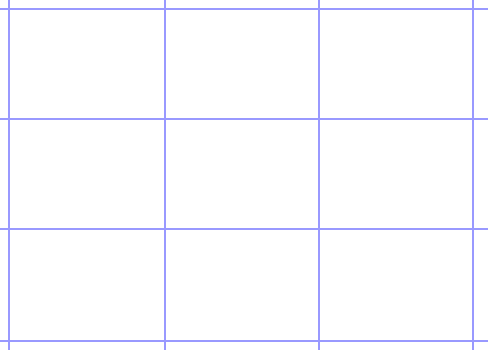
But when we look at the above set of gauges we see they describe 13 different rectangular shapes from this:
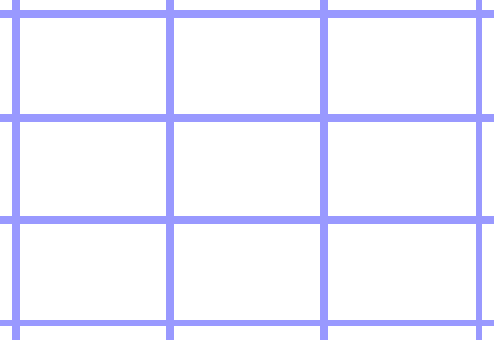 to this:
to this: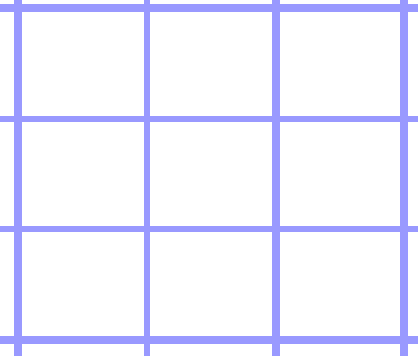
Here’s the graphic that shows the different height to width ratios of those 20 gauges in numbers in columns E and F. To get these numbers I simply divided the sts per inch by the rows per inch (sts/rows).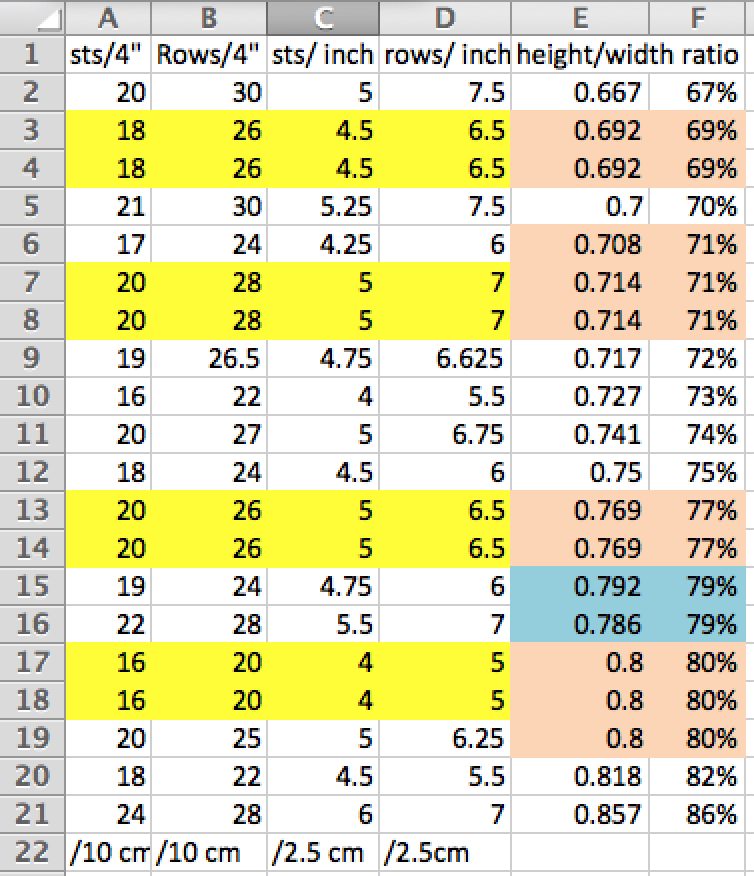
Almost every knitting pattern in existence says something like this:
- “CHANGE NEEDLE SIZE IF NECESSARY TO OBTAIN THE CORRECT GAUGE”
- “US #6 / 4 mm and US #8 / 5 mm (or as req’d to meet gauge)”
- “[always use a needle size that gives you the gauge listed below — every knitter’s gauge is unique]”
- “Adjust needle size if necessary to obtain the correct gauge.”
And because every pattern says something like that, people have come to believe that this is the truth, an undeniable reality, that if you change needles enough, you will get the gauge the pattern calls for.
But that’s not always true. In fact, it’s usually not true.
You could use 42 different sets of needles, the exact same yarn that a pattern calls for, stand on your head and spit sapphires, burn candles to the “Goddess of Pattern Gauge” and STILL NEVER GET THE EXACT GAUGE CALLED FOR BY THE PATTERN. You probably CAN get either the right stitch gauge OR the right row gauge, but it’s the combination that’s treacherous. AND . . .
It won’t get any better for as long as you knit . . . BECAUSE your skill level and years of experience are not the reasons you’ll never get the gauge some patterns demand. Instead, your gauge is based on
- your yarn
- the needles you’re using
- the method you’re using (circular, flat, continental, English, Portuguese etc)
- the pattern stitch you are making
- and the most magical ingredient of all . . . your beautiful, capable hands.
Why this isn’t the end of the world and is actually good news
- You can’t solve a problem until you admit that it exists. I’m saying this is a problem. Now that you know that, you can take steps to solve it.
- You can adjust a pattern to fit your personal gauge and it’s not that complicated.
- I will give you some ways to work around it, but not today (except Sweater 101 which already exists and which is the ultimate workaround). Just stay tuned and sign up for my newsletter if you haven’t done so already.
Meanwhile, your homework is:
- Read this article more than once if you need to and study the charts. If you still don’t understand it, comment below to tell me what you don’t get and I’ll try to rephrase it.
- Comment below to tell me how this jives or doesn’t jive with your experience.
- Share this article with your knitting groups, online and off. I want to reach as many people as possible on this subject and can only do it with your help. Because I think it’s important. Because I think it will help people graduate from making safe flat things (scarves, cowls, afghans, baby blankets, dish cloths) and start making sweaters. With confidence. With enthusiasm. With joy.
THE END (for now), ch
P. S. CLICK HERE to hop to my favorite link for printable Knitters’ Graph Paper.
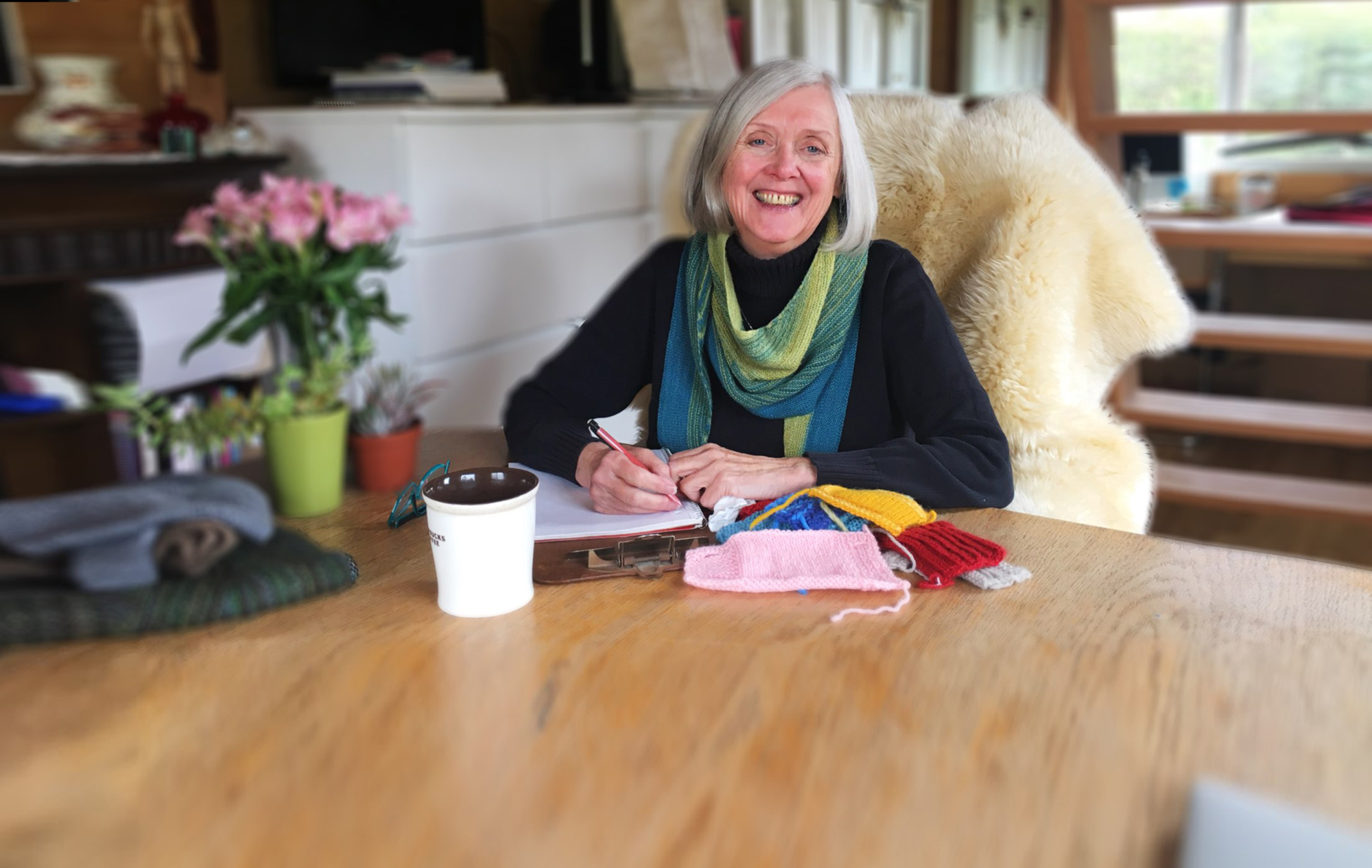
Thank You so much Cheryl! I have literally spent the day knitting, washing and blocking swatches and almost packing up new yarn to use for a pattern I have held onto from a LofK magazine 2013 to return because I have given up until I read your post! I am plus just 2 or 3 stitches in each direction. I’m over it and have started the pattern! The yarn I ordered has almost a 5 gold star review and I was blaming everything including the designer for putting me through this!🙄
Thank you for this, Cheryl. I deeply appreciate the nerdiness: that table of row/stitch gauges and ratios was exactly what I needed to see. I’m looking at a sweater pattern – worsted yarn, stocking stitch (as we Brits call it) – with a suggested gauge of 22sts x 34 rows (i.e. a height:width ratio of c.64%) and my two swatches on different needle sizes give 22×27 or 23×29 (i.e. height:width ratios in the 77-80% range). Your discussion here has helped me to grasp that I will never match the pattern gauge here because clearly the designer and I are at opposite ends of the row gauge spectrum! Out of interest, I checked her other patterns and they all specify an unusually tight row gauge and in testing notes, most of her pattern testers don’t manage to match her gauge either. Thanks so much for spelling out the whys and wherefores of this: I feel liberated to go off and make the sweater my own way!
I’m so glad to hear this Hanna. Thanks for commentig.
Thank you so much for this info. I’ve been knitting for along time and gauge is always a problem. I end up frogging back a few times before I’m happy with the result. Sometimes very frustrating. I appreciate all your help. Looking forward to reading and viewing more.
Dear Cherly
I am new membmer. First of all, I like your lectures and good helfull advices. My question is – how to adjust sweter pattern to my guage when the pattern is complete for instance it has short row? Sorry my english is not good I am from Slovenia. Bye Irena
Hi Irena,
The process of adjusting an existing sweater pattern to your gauge can be a complicated process, especially if there are short rows. One thing you might try is to draw a sketch of each piece with the measurements on it. Then use your gauge to change the number of stitches and rows. I don’t know if you own Sweater 101 but learning that process can help you adjust patterns. I also have some videos that might help. THIS is a playlist that shows you the Sweater 101 method all the way through. HERE IS AN INDIVIDUAL video that addresses one way to work with a pattern with a different gauge.
I have been knitting since I was 15…some 30 year now …and not well. Most of what I knit in the past did not fit, I knit tightly and my gauge was always off…now I take the time to do a swatch, but with certain designers I still find I don’t get gauge, and yes I go up a needle size, yes it is still fustrating….Maureen
I hope you gained some insight from this article and feel a little better about it Maureen. You are certainly not alone.
I rarely follow a pattern as they never fit the size they are supposed to. I like a design and work from there. Do some test pieces to see how the fabric works out on different needles, see what I prefer, then count those rows and stitches and calculate my own stitch count. Working from someone elses gauge is a pain. But this is how I was taught to knit, way back in the 60’s/70’s, my Nan never using a written pattern and only had two or three sets of needles, imperial 10, 8 and 7. Could not afford wide range of needles or pattenrs.
Same with crochet. Give me a pattern, I havent got a clue, show me a picture and I can work it out, something similar anyway.
That’s a great skill set Del!
1) AAAAAAaaaaaaaHHHHHhhhhhhhhhhhh! You left me with a cliff-hanger -almost can’t stand it.
2) Right here, (I copy/pasted part of your text above):
“Why this isn’t the end of the world and is actually good news
You can’t solve a problem until you admit that it exists. I’m saying this is a problem. Now that you know that you can take steps to solve it.”
……………………Put a comma after “that” in “Now that you know that,……”
It helps read better. Well, …..just trying to help.
3) YOU are a library! What you are doing is SPECTACULARLY MAGNIFICENT, and I want to make sure you know how much it is appreciated. I appreciate it this much: from here to the end of the universe. Not possible to appreciate more. And if I could hug you, I would. Thank you Cheryl-seems so little to give back to you.
Words of appreciation and a hug are very lovely gifts. Thank you. And I’ll add that comma. Good suggestion. Again thanks.
Has you next video become available yet?….been waiting with bated breathe.
Colleen
Oh dear Colleen. I’m sorry I didn’t get it done but I’m scheduled to shoot it tomorrow. As usual it has morphed into a bigger subject than I thought it was. It’s about how I approach every pattern by analyzing it first, checking for errors and adjusting the construction techniques to make for good finishing. Then I adjust for a different gauge. I decided to show the whole process (even though it’s YouTube which is most people use for short demonstrations) rather than just the last step. It takes me, on average, about 13 hours to pull together a video with scripting, props, shooting and editing. About an hour per finished minute, in other words. This one might be longer.
Color of the yarn will also affect gauge. And, row gauge is usually the culprit for ill fitting sleeves in both length and armhole. I’ve tried to teach knitters to acheive their desired fabric, measure and recalculate.
I’m doing a video next week with an actual problem someone sent me. She got the right st gauge but not the row gauge. I’ll take people through the process of changing the pattern to match her gauge, step-by-step. It’s a free pattern (a nice one) so everyone will be able to access it (I’ll provide the link) and print it out and use it themselves if they want.
YES! It makes me crazy! I’m pretty good at math, so I usually get close and then do the math to adjust the pattern and make up for the remaining difference. Usually I go for getting the stitches/inch right with my yarn, needles and style. Then I adjust as necessary when the rows/inch aren’t right.
That’s the method I recommend as the first resort.
I have found that only does yarn and needle type make a difference, but knitting style. My preferred method is Portuguese, but latest project could not make gauge in this style, but by throwing I was on gauge. Strange.
It’s pretty fascinating to me.
thanks Cheryl… I will be looking for that on Feb 12….I think that will be right up my alley…I will hold off with sending you a pic until I view the Feb 12 programme
I have totally given up trying to match gauge. Even with the specified yarn (which I rarely have). I just do the math and knit to my gauge! There are even apps that will do the math. It only took me 30 years to come to that epiphany, so you’ve saved a lot of folks my agonies with your lovely article!
Thank you MaryAnn. I was responding to comments I have seen where people think they are doing something wrong or that they can’t be good knitters if they can’t match the magical unicorn gauge. And that’s heartbreaking for them. And unnecessary. Congratulations on your epiphany. How long it took to arrive doesn’t matter. 🙂
Thanks for your reply..maybe I should be asking you this question. When looking at a new pattern, i.e. one that was purchased….should I be looking at the shape of the sweater pattern and look to see which one it fits into as according to sweater 10l and then base it on that….I’m just not sure how I now go from starting to understand what you are saying in sweater 101 and starting from scratch but actually applying it to a purchased pattern and using yarn not suggested….I’m I making any sense??…believe it or not I have been knitting for 30 years!!!
Thanks Colleen
And believe it or not, I sort of get what you mean after teaching this for 30 years or so. With Sweater 101 you have the skills to work most basic patterns and a lot more. Cardigans, yes. Fitted waist, yes. Things that go diagonally over your shoulder and hang extra long over your bum, maybe. If the pattern has a schematic, a little picture with the measurements on it, you can make that shape and size with whatever you want. You can do it without a schematic but it’s tedious to tease out all those measurements from stitch directions. I always rewrite every sweater I make on a Sweater 101-style template, with one size, specific gauge, etc, and I fill in the numbers. Can you give me a specific pattern to look at (link?) It’s easier for both of us with a concrete example . . . my next project, by the way, is a video of reworking a pattern linked to me by Rosemarie in November. She couldn’t get the exact gauge and I’m going to show how I draw it out, assign numbers, you’ll have a link to the pattern so you can follow along (it’s free and it’s good looking). Publication date goal is Friday Feb 12.
I’m kind of rambling too.
Great article as always Cheryl! I agree with you that it’s nearly impossible to match both the row and stitch gauge in someone else’s pattern. I only swatch when necessary (sweaters, hats, gloves, socks ), and I usually try to go for the stitch gauge more-so than the row gauge. In most cases I can add more or take away rows if needed, but adjusting for a stitch gauge difference almost always takes math and math is hard (in my best whinny voice) :-). I have gone completely off the rails before and adjusted the pattern to match my gauge rather than the other way around, but when I’m in the mood to just knit and not have to think too much, I find it easier if I’m on stitch gauge as long as the resulting fabric is nice. If not, then I simply move on to another pattern that suits me better. I look forward to your next blog post!
Thanks Marcia . . . you made me laugh. And Sweater 101 is, of course, completely off the rails. Your strategy to go for the stitch gauge is the one I recommend first. If you can’t possibly get it you might have to refigure everything according your your own gauge but it ends up not being that hard, really. Have you watched my series, “How to Knit a Sweater” on YouTube? In it I fill in a pattern according your gauge pretty quickly. I think the process isn’t so hard as the concept is alien. By the way . . . I did only a small swatch for my newly married niece’s afghan. I figured “This is close enough. It’s an afghan, for heaven’s sake, I can knock this out in a hurry.” It’s a good thing they have a king-sized bed. It’s way wide and taking forever. . . . so much for the don’t need a swatch for an afghan idea for me, though usually it’s OK.
Cheryl,
I’ve been avoiding shaped knitting for a long time and am simply thrilled that you’ll be putting the video together to help us all deal with gauge issues. There are so many sweaters I’d love to make. I keep old issues of magazines and can’t seem to stop printing out more from the internet. I WANT TO KNOW YOUR TECHNIQUE!!! I always enjoy your articles and plan to check you out on YouTube next.
Thanks so much for your determination to get it right.
Thanks Mary. My technique is pretty simple. Applying it to a lot of different situations takes more experience and thoughtfulness, but you can get a good idea of it with my “How to Make a Sweater” series on YouTube. It starts here: https://www.youtube.com/watch?v=-QY8Pd_qq4w&list=PLNNpR4lw08r2O2uND5D9-hhNbe5adAz4p
And you are welcome and thank you.
I have had this problem practically every time I knit or crochet. Sweater 101 should be a must have for every knitter and crocheter. It has helped me tremendously.
Maybe in a few years there will be a Pants 101…. hint hint 😉
Oh dear Kathleen . . . I’m not that good with pants. However . . . September this year marks the 25th anniversary of Sweater 101’s original publication by Patternworks. I think it needs some things updated and expanded . . . but more on that later. Meanwhile, harping on gauge means I’m starting to beat the drum for a realistic approach.
Hi…purchased you e book of sweater 101…. Working my way thur it…I also found you on you tube and followed your lesson on making the child’s polo sweater…ended up making two with two different size needles and lo and behold they came out the same size.
I now have to understand how to translate this into a sweater that I have a pattern for and try to make the alternations..I’m definetly in a learning curve.
Both the e book and your you tube sessions are very helpful…thank you.
I do have a question…are you aware of any support groups/blogs in regards to your method of knitting.
Thank you
Colleen from Canada
I’m glad the child’s polo worked for you and golly! . . . I don’t know of any support groups or blogs regarding my method of knitting. It never even occurred to me but let me think about this. I wonder if Ravelry would work. I have a presence there but I don’t go there much. I’m mostly on FB and YouTube. Thanks for the suggestion Colleen from Canada. I was raised in Detroit and now live not far south of BC. I’m always close to Canada it seems.
I find it difficult to make a swatch using a circular needle. Can you help me with this?
Hi Penny. Yes. I’m assuming you’re wanting to make a swatch for circular knitting or fabric. First, the swatch needs to be wide, like 45 or 50 sts and in pattern. Cast on your stitches. Slide them to the other end of the needle. Leaving a long, loose loop behind your work, knit across. Again, slide your sts to the other end of the needle and leaving that loose loop, start knitting again. You need to have a large swatch because the few sts at either end are loose. Make sure you leave the loops loose enough that you’re able to keep the swatch flat to measure it later. I hope that helps.
I have never knitted a sweater for an adult that came out right. I thought it was because I hadn’t taken the time to keep making swatches with different size needles until I got the gauge right. Then I signed up for an online class for a sweater that I really loved, and chose the yarn they recommended, which was very expensive. I think in total the yarn came to $110.00, but I really wanted to succeed with this sweater and now that I’m retired I figured I could splurge a little since I wasn’t taking food from my family’s mouths. Well, I made 3 swatches and never did get it right, so I chose the swatch that was stitches per inch correct and decided I could change the number of rows to come up with correct length. But that’s not the real answer – it was the easy way out of doing all the math. The sweater is not finished and has been in the closet for more than a year. I’m up to the point of making the sleeves. I can’t wait to see what math problems you’re going to come up with to help us. It’ll be worth the extra effort to finally have success with a sweater. I really appreciate you and love your sense of humor!
Kathy
I’m so glad you’ll be able to finish your sweater! You chose the first strategy that I will recommend, to get the stitch gauge and adjust the length. A woman sent me a pattern link and her gauge which was the right st but wrong row gauge in November. Next up from me is a video where I show step-by-step how I would adjust her pattern and for the straight parts it is just a matter of changing the number of rows. But one big key is “The More-or-Less-Right Formula” which is not a formula at all but a simple division problem, but it’s how you can refigure all the shaping to match the new gauge. I’m pretty sure it will work best as a video instead of an article but I never know until I’m in the project.
And thank you Kathy, for your kind comment at the end. I’ve already had 2 people file complaints with aWeber over the email I sent out to announce this, and I didn’t even use any swear words. Of course- percentage wise, that’s pretty miniscule. Still, it always surprises me that people complain rather than just unsubscribe and I never get to know why because aWeber secretly takes care to hide them and their reasons. That’s not very helpful.
Amazing, so totally true. Even now my 72 year old hands betray me when trying to duplicate an item knit only 4 years ago. Now Cheryl, my possibly misguided solution was to buy and learn to use (not easy) knitting machines. Bought a Brother 930 standard and a Brother 7mm mid gauge. And, believe it or not – same issues. Somewhere there is a gauge god who knows all but occasionally sends the gauge gremlin to keep us guessing. I think the realistic position to take is as Megan Mills above, keep knitting and hope it will fit someone!
Kay! Yes! Knitting machines have big learning curves and they DO have the same issues. Besides the obvious tension setting, machine gauge depends on the tension of the yarn feeding into your carriage, the speed of your knitting, the weight hanging from it and . . . maybe the humidity. (well, maybe not that last one but who knows? :D)
I’m bad. Sometimes I don’t even really know what size needles I’m using. If they make the fabric I like they’re the right size and I figure and fudge to make things work. I does work, for me. I want to get brave enough to really delve into your numbers things. I and numbers do not get along well. Not your fault, and certainly not a negative comment on doing the math needed. Fortunately I have friends that can help in a pinch.
Good article Cheryl 🙂 All the factors you mentioned are so true. However, I especially related to the last ingredient for gauge – hands. I have arthritis in my hands (not enough to stop me knitting thank goodness!) which means it can take a little while to ‘warm up’ enough to keep my gauge correct – I’m usually a bit tighter when I first pick up my knitting, then my hands relax/loosen up and I’m back into my ‘normal’ knitting rhythm. I find if I keep a swatch beside me, knitting a couple/few rows helps with this. Bit of a pain when in a hurry to finish something, but better than having to rip it out 🙂
Thanks Maggie. Everyone, even people who don’t have arthritis, tend to loosen up their gauge a bit after they get used to the feel of a new yarn and stitch pattern . . . they just relax into it. But I know what you’re saying about hands that don’t work like they used to. I’m making an afghan for my youngest niece and her new husband who got married in December. I started it in September and thought I could finish it in a hurry because it was on big needles, but it’s a bouclé and very “draggy” on the needles. It’s also an acrylic which I’m not used to (they have animals and it needs to be machine wash and dry). I found some needles that are slicker than the ones I started with but I can only knit a few rows at a time before I have to set it down for the day because my hands ache. I had hoped to finish it while it was still winter. 🙂
I am so relieved to hear a professional say this! With my 4th sweater, when I was drowning in gauge swatches (coasters? trivets? cat hats?), I did the math to alter the pattern for the stitches per inch, but how to simultaneously account for row height escaped me. It fit reasonably well, but was long in the arm, arm opening, etc. I await your wisdom on the issue with baited breath.
Rosemarie of Canada sent me a pattern link and her gauge in November. She had the stitch gauge but not the row gauge. I’m going to show how to rewrite the pattern. I think it will work as a video so I can show how I do the process. This article started as a video script but I decided there were too many charts and numbers for people to catch on the fly.
And Diane . . . it’s disheartening to see people discouraged by this when it’s a relatively easy fix. I’m glad you’re relieved. Thanks for commenting.
I’ve been very fortunate most of the patterns I’ve used I’ve matched the gauge exactly, although there have been a few items I haven’t liked the fabric at that gauge, so I’ve used what I wanted and just added stitches/rows/repeats until it’s the size I wanted.
Although the whole gauge thing has put me off making sweaters for the time being…
Most stockinette stitches fall within the 67% to 75% ratio shape so often we can get close and have to make just a few adjustments. Good call on adjusting to the fabric you like rather than the gauge. My next project is to do a video showing how to adapt an actual pattern to a different gauge. It was a problem sent to me in late November.
Agreed. I’ve even noticed a difference with the “same” yarn, hands, needles, stitch pattern, stitch knitting style… but a different dyelot – not a different colour, just a different lot! I’ve sometimes helped older people with bad arthritis by finishing something they started for a beloved grandchild. Matching their gauge was almost impossible. What was my solution? My hands. I just kept going over it again and again (and again) until my hands figured out what they needed to do match gauge. But I wouldn’t recommend this except when unavoidably necessary to complete something someone else has started and they don’t want it started over. It’s far better to work at your “natural” gauge, I think, and change the pattern. Or, if I have to try making something because it intrigues me and the pattern isn’t amenable to change then I find someone else it fits when I’m finished. 😀
I love that pragmatic approach at the end Megan. I once had a student who said she just knit sweaters because she liked it and found a “victim” to wear it when she was done. She was, of course, a lovely knitter but just didn’t adjust for her own gauge. And thanks for telling me about the dyelot difference!!! That’s one even I had not heard.